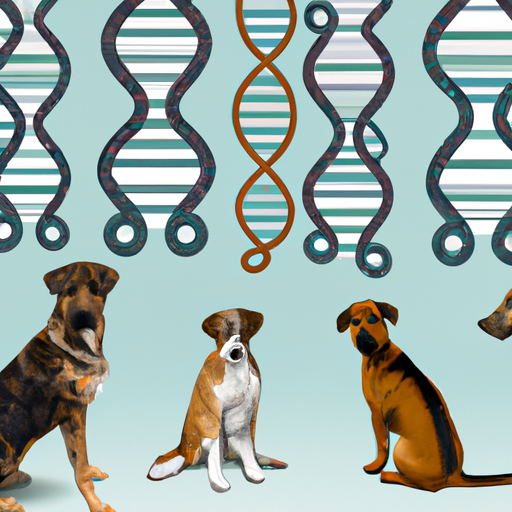Understanding Dog Anatomy
First of all, let’s delve into the fascinating world of dog anatomy. You might be surprised to find that a dog’s tail is actually an extension of its spine, covered in skin, fur, nerves, and blood vessels. This tail serves several purposes, from expressing emotions to maintaining balance.
While many dogs have straight tails, others sport a veritable corkscrew. The reason? It’s all down to genetics. Just as your hair might naturally curl or fall straight, a dog’s tail follows its own genetic code. The curliness of a dog’s tail is actually determined by a series of genes that control the direction, length, and growth rate of the tail.
The Role of Genetics
Just as genetics determine the color of a dog’s coat, the shape of its ears, or the length of its legs, so too does it influence the curl of a tail.
Some breeds are more likely to have curly tails. For instance, dogs of Asian descent – such as the Akita, Shiba Inu, and Pug – often have curly tails. This is due to a genetic predisposition for what is known as a “sickle” or “ring” tail.
| Breed | Tail Type |
|---|---|
| Akita | Curly |
| Shiba Inu | Curly |
| Pug | Curly |
| Beagle | Straight |
| Labrador Retriever | Straight |
How Curly Tails Function
A curly tail isn’t just for show – it has a function, too. In cold climates, dogs with curly tails can wrap them around their bodies for added warmth, acting like a built-in scarf. On the other hand, in hot climates, a curly tail can help to minimize the amount of heat lost through the tail, an often overlooked appendage when it comes to regulating body temperature.
The Health Implications of Curly Tails
As a caregiver, you know that every aspect of your pet’s health matters. A curly tail in and of itself is not a health concern. However, if your dog’s tail suddenly changes shape or they seem to be in pain, it’s time to visit the vet.
In some cases, a dog’s tail may curl due to a medical condition, such as a spinal issue or injury. Therefore, it’s always important to keep an eye on your furry friend’s tail and ensure it’s in tip-top shape.
Frequently Asked Questions
1. Do all dog breeds have the potential to have curly tails?
No, not all dog breeds have the potential to have curly tails. The trait is largely genetic and is more common in certain breeds.
2. Can a dog’s tail change shape over time?
Unless due to an injury or medical condition, a dog’s tail shape should stay the same over its lifetime.
3. Can a dog with a curly tail have puppies with straight tails?
Yes, if a dog with a curly tail mates with a dog with a straight tail, the puppies could have either tail shape, depending on their genetic mix.
4. Should I be concerned if my dog’s tail is curly?
No, a curly tail is not a cause for concern as long as your dog does not seem to be in pain or discomfort.
In conclusion, the curliness of a dog’s tail is a fascinating aspect of their biology, one that is largely determined by genetics. As always, if you have any concerns about your pet’s health, it’s best to consult with a veterinarian.



